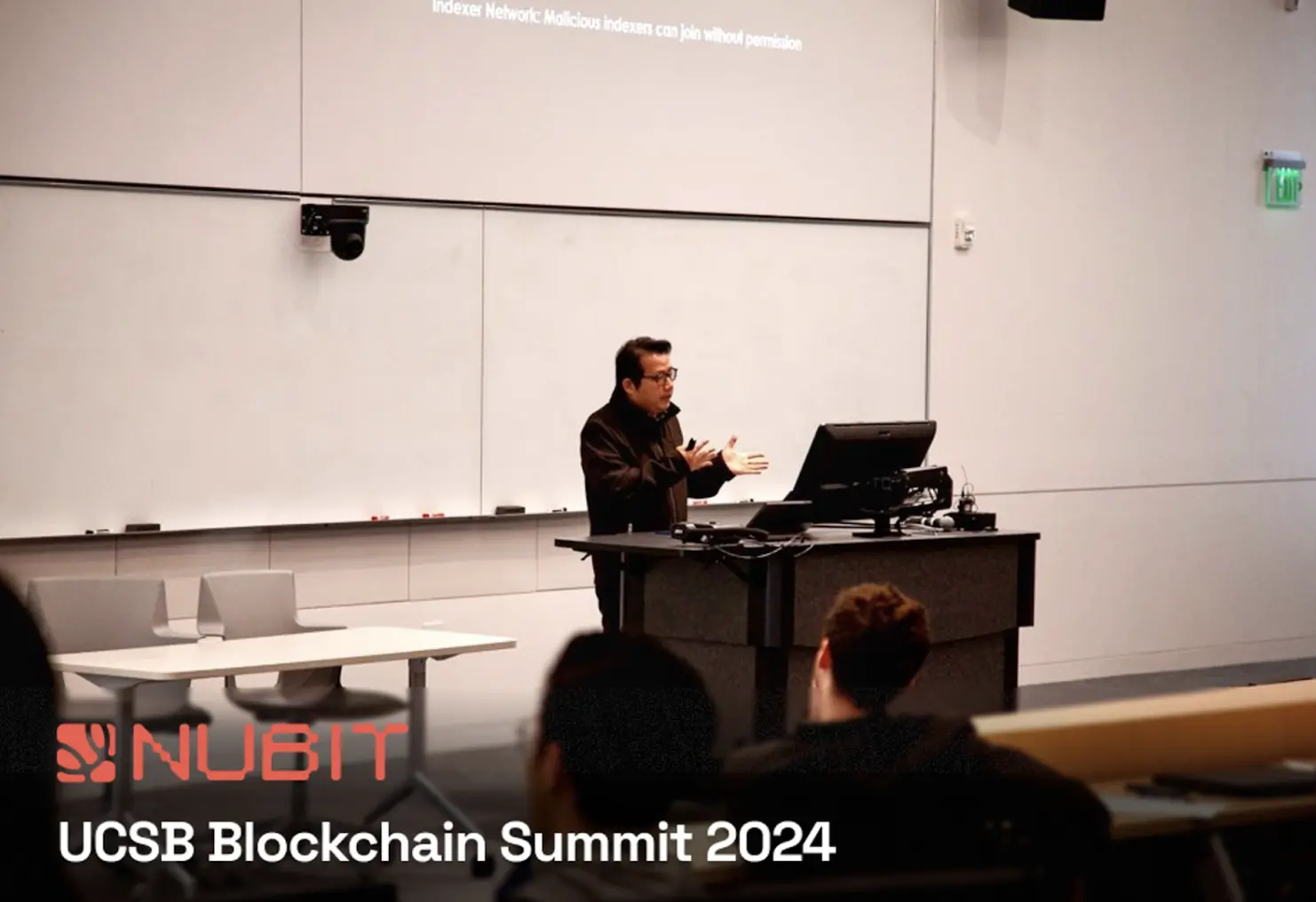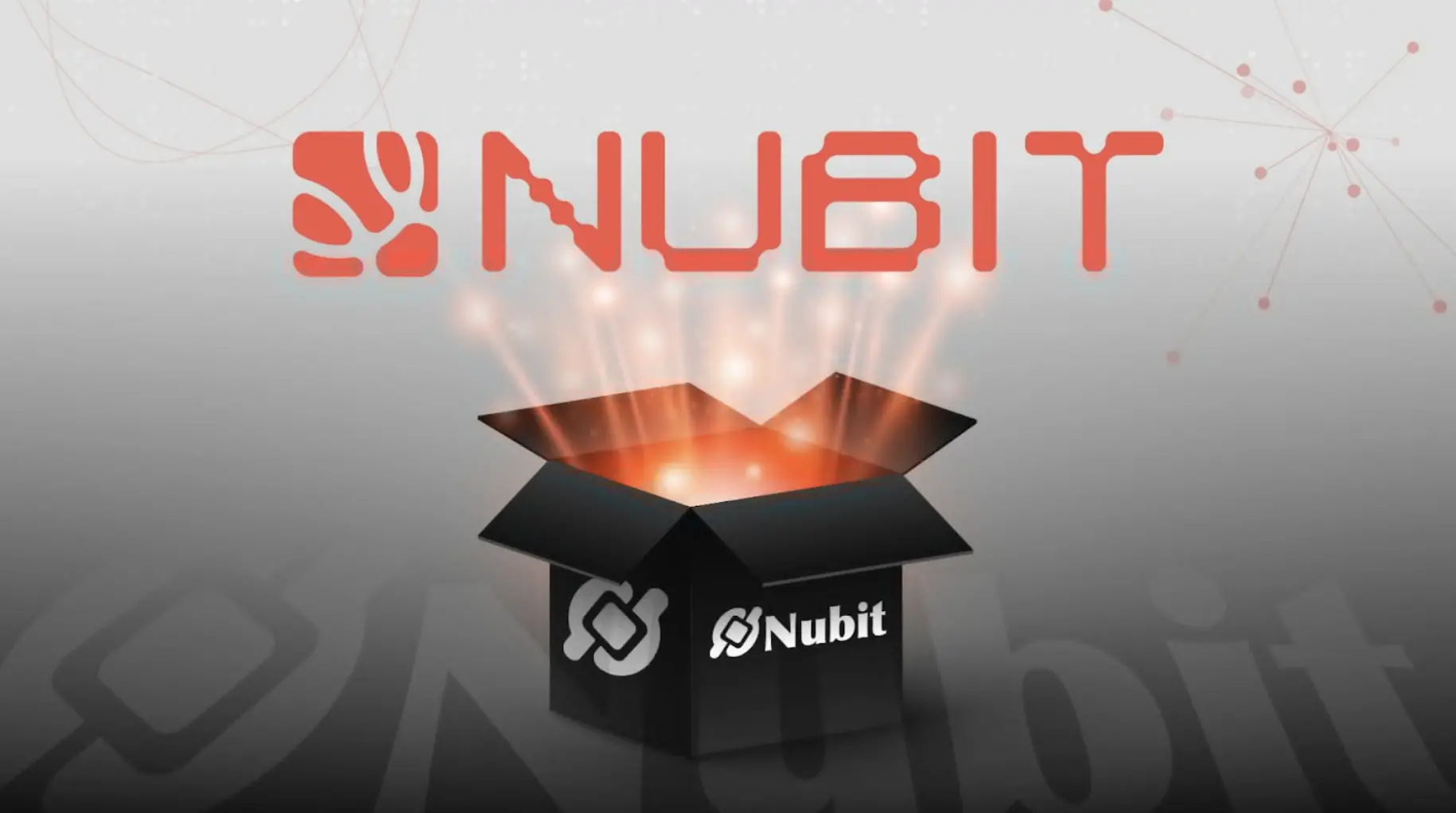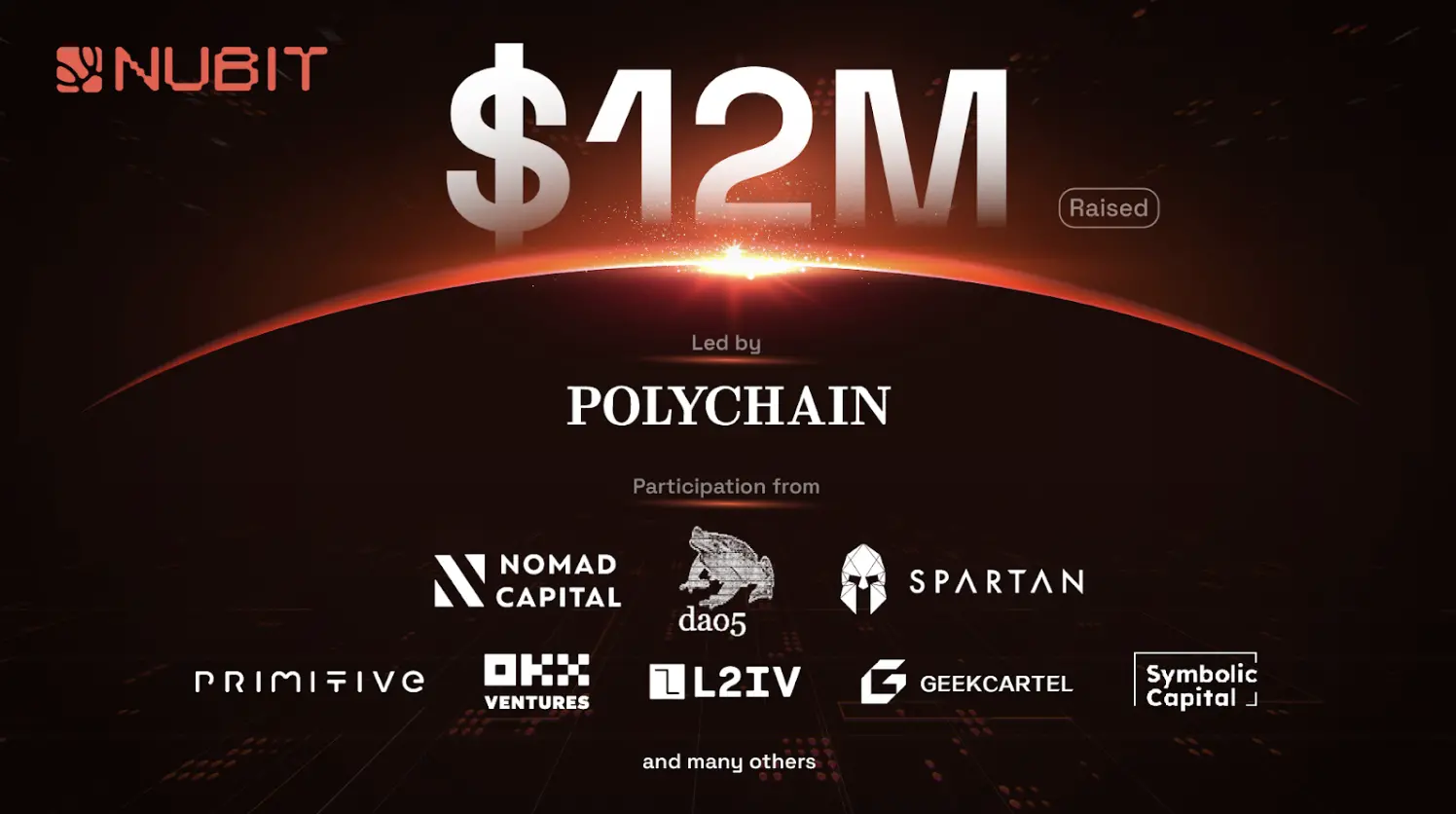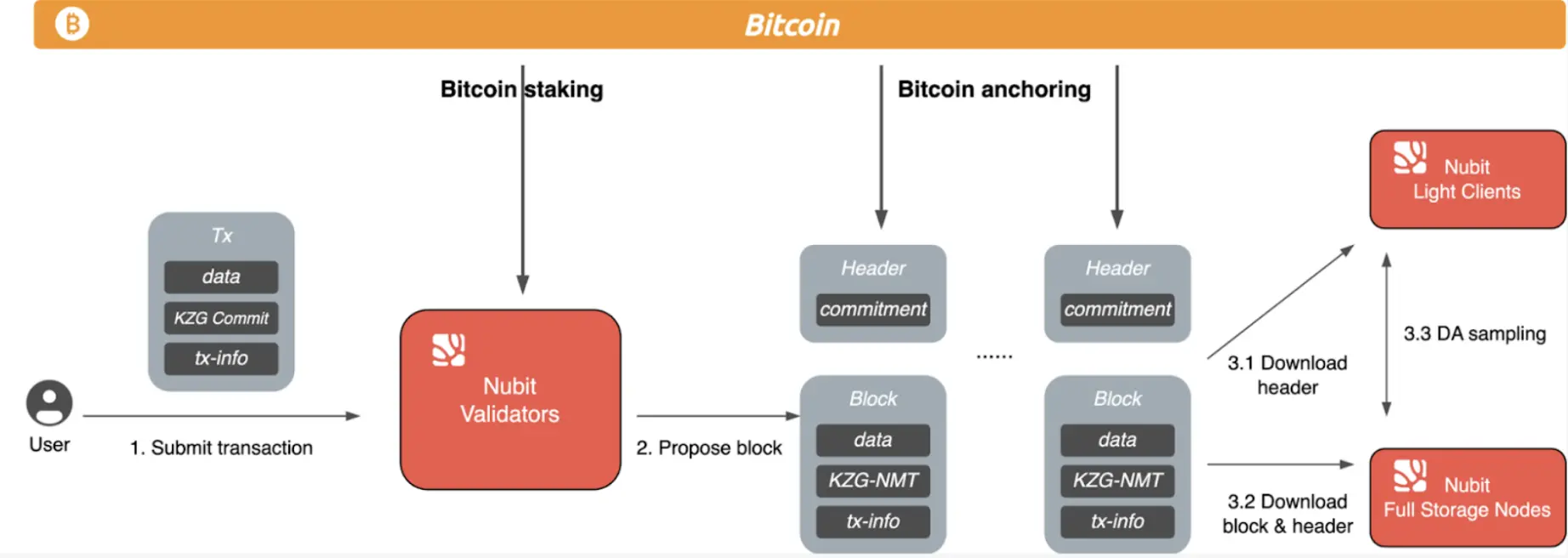Author: BlockBeats
Not long ago at the Bitcoin Asia Conference, BlockBeats had the privilege of interviewing one of the founders of Nubit, Yu Feng, a professor in the Computer Science Department at the University of California, Santa Barbara. He introduced us to his personal experience and how he led the team to develop the first DA layer project in the Bitcoin ecosystem - Nubit. As a computer security expert, his exploration and innovation in the Bitcoin ecosystem are remarkable. During the interview, Professor Yu Feng shared the development history of Nubit, its technical features, and the outlook for the future of the Bitcoin ecosystem.
Professor Yu Feng stated that the development of Nubit began with an analysis of the need for infrastructure in the Bitcoin ecosystem. Due to the limited throughput of the Bitcoin mainnet, there was an urgent need for a native DA solution. Therefore, the birth of Nubit aimed to address the infrastructure issues in the Bitcoin ecosystem and lay a solid foundation for its long-term development. In addition, he also introduced the technical features of Nubit, security measures, and shared the team's progress in market expansion and ecological cooperation.
Regarding the future of the Bitcoin ecosystem, Professor Yu Feng believes that the next breakthrough may come from the development of applications that can generate widespread user interest and demand, such as games or other innovative technologies. He believes that these applications will drive the development of the entire ecosystem and promote the continuous growth of the Bitcoin ecosystem.
The following is the original content of the interview:
Please introduce yourself first, when did you enter the crypto industry? What attracted you to the narrative of cryptocurrency?
Yu Feng: I am Yu Feng, the founder of Nubit, and also a professor in the Computer Science Department at the University of California, Santa Barbara. My main research areas are software security and programming languages. I started to get involved in cryptocurrencies in 2014 when I was still pursuing my Ph.D. I originally wanted to research Bitcoin, but my advisor did not agree. It wasn't until 2018, after becoming a professor, that I started to focus on blockchain, especially in the area of security.
I believe that cryptocurrencies represent a kind of freedom, and decentralization is advocated by many who cherish freedom. For me, the freedom of cryptocurrencies is inseparable from their value. As for why I chose Bitcoin, before 2014, there was no Ethereum, and at that time, Bitcoin was the main cryptocurrency popular among a small group of people. Later, with the rapid development of the Ethereum community, I also started to study Ethereum and became a developer and researcher in the Ethereum ecosystem.
How did your academic background and personal pursuits influence your understanding of Bitcoin, including persisting in this track when many people were not optimistic about cryptocurrencies?
Yu Feng: Since 2017, we had been conducting research on Ethereum security in universities for some time. Last year, we decided to shift our focus to building the Bitcoin ecosystem. In 2022, I founded my first company, focusing on providing security audit services for projects in the Ethereum community, including smart contracts and zk aspects.

By the end of last year, my students and I discussed the limitations of our work in terms of user impact. We realized that although our services were important for the B-end, their direct impact on the C-end was limited. We decided to expand into consumer-oriented projects.
We noticed that the Ethereum community was already very mature, and there might be more development opportunities in communities with inadequate infrastructure. One of my students, who is now another founder of Nubit, suggested that we shift our focus to the Bitcoin field because the infrastructure in this field was particularly lacking.
Especially at the beginning of last year, my student had already started paying attention to new technological developments in the Bitcoin ecosystem, which was still in a very early stage. We decided to start with Bitcoin, and at that time, we did not anticipate the explosive growth of this community.
Our initial entry into the Bitcoin ecosystem was to continue our security work because we had rich experience in this area. However, after further investigation, we found that the entire ecosystem was in a very early stage, and even basic ecological needs had not been met. For example, a project was hacked for four to five million US dollars, indicating that security was still crucial, but the lack of infrastructure was a more urgent problem. For example, processing a simple image on Bitcoin could cost several hundred dollars, showing a serious lack of data processing capacity. We decided to start from this direction to solve these basic problems, lay a solid foundation for the long-term development of the community, and thus Nubit was born.

As the first DA layer project in the Bitcoin ecosystem, Nubit has made rapid progress within half a year of its establishment. Can you briefly introduce Nubit and its current achievements?
Yu Feng: Nubit is the first DA project developed by our team in the Bitcoin ecosystem. It is also the first project of its kind in the Bitcoin ecosystem. Nubit is mainly dedicated to solving the problem of insufficient throughput on the Bitcoin mainnet and provides a native DA solution. Our project has been established for less than a year, but it has already gained significant visibility and progress.
From a product perspective, we have completed pre-alpha testing and are about to start the final alpha testing. In addition, we have developed an execution layer based on the Nubit DA framework, which is stateless and efficient, allowing users to reliably verify computation results, and this will be widely used in Bitcoin wallets and by users.
In terms of market and ecology, Nubit has gained a certain level of popularity in Asia, with the number of fans growing from a few dozen initially to tens of thousands. We have established deep cooperation with several leading projects in both the East and the West, such as Babylon, Merlin Chain, Polyhedra, etc. These collaborations are not just superficial handshakes, but real adoption of our solutions.
From a financing perspective, since our establishment last Christmas, we have completed three rounds of financing, totaling over 12 million US dollars, with major investors including industry-leading institutions such as Polychain and dao5.

In terms of the team, from the initial three founders, including myself and my two doctoral students, we have grown into a medium-sized team of over 30 people, covering various aspects such as market sales, product, and R&D.
How is Nubit different from other DA solutions?
Yu Feng: Compared to other Bitcoin DA projects in the market, Nubit has several unique advantages. First, we provide a truly decentralized solution, unlike some more centralized DA solutions in the market, which usually rely on a small cluster of servers to maintain data availability.
Second, our economic security is guaranteed by Bitcoin stakers. Compared to other DA solutions that rely on a single project or a smaller user base, our model involves thousands of stakers, enhancing the security of the entire system.
Finally, our consensus layer is fundamentally different from existing Bitcoin or Ethereum DAs, supporting tens of thousands of stakers, ensuring the highest level of decentralization and security.
Why is Nubit trying to use its own chain's DA to replace BTC L1's DA?
Yu Feng: Similar to the vehicle restriction policy in Beijing, the throughput of the Bitcoin mainnet is extremely limited, similar to all vehicles being stuck on the Second Ring Road during peak hours. In comparison, traditional banking systems, Visa, or UnionPay can process about 20,000 to 30,000 transactions per second, Ethereum can process about 30 transactions per second, while the Bitcoin mainnet can only process about four transactions per second. Therefore, Nubit's positioning is to help alleviate the storage burden of Bitcoin Layer1 as a Bitcoin DA strategy.
How does Nubit handle network fee settlements?
Yu Feng: There are two settlement methods for Nubit network fees: one is to directly use Nubit's native tokens for payment, and the other is to pay with Bitcoin, which requires the use of a cross-chain bridge based on the Lightning Network to achieve this.
The design of these two settlement methods is to ensure the economic security of Nubit and avoid reliance on a single staking system, thereby reducing the risk of the entire network being affected by a single economic event. For example, if the settlement method is based on Nubit staking, the economic security will depend on Nubit stakers. If any issues arise, such as the economic security of the stakers being threatened, the entire ecosystem may be affected.

Nubit Architecture
Ultimately, the choice of a Bitcoin staking-based solution is because this method is more in line with the spirit and technical architecture of Bitcoin's native system, while also providing users with more choices and security. Users can choose to invest using Nubit or rely solely on Bitcoin staking to maintain the stability and security of the network. This approach aims to ensure that the Nubit network can effectively support the development of the Bitcoin ecosystem, rather than just providing a simple payment solution.
How does Nubit ensure security?
In the field of Web3 security, we ensure the security of Nubit from three main aspects. First is economic security, which is a layer we highly value. Nubit integrates Babylon's POS staking solution to ensure that the economic security of the entire DA ecosystem is determined by Bitcoin's native stakers.
The second layer is the security of the consensus layer. This involves the verification process of transactions, determining the legitimacy of a transaction. Our consensus mechanism is designed based on a high-performance support solution, unlike some projects in the market that can support only 200 stakers at most, our solution, once launched, can support tens of thousands of stakers. This scale of staker support can significantly increase the level of decentralization, almost approaching the level of decentralization in Bitcoin's native system.
The third point is security at the code level. No matter how well-designed, if the code implementation is poor, problems may arise in the end. Therefore, we also place great emphasis on security in code implementation. Our code is in the final stage of testing on the testnet and has been audited by three top security audit companies. In addition, our internal team is also conducting formal verification on some core code to ensure smooth operation.
Does the development of the Ethereum DA layer have any reference significance for the development of the Bitcoin DA layer?
When we were developing the DA project in the Bitcoin ecosystem, we did pay attention to the DA in the Ethereum ecosystem, as the development of DA in Ethereum is more mature and rich than in Bitcoin. This kind of reference is necessary in the early stages as it can help us quickly establish our own technical foundation and ecological applications. However, simply copying Ethereum's solutions is not enough to support the long-term and healthy development of the Bitcoin ecosystem.
Bitcoin and Ethereum have significant differences in ecosystem maturity, technical genes, and mainnet characteristics. For Ethereum, the DA layer enhances its already rich mainnet functionality, while for Bitcoin, due to the extremely limited transaction processing capacity of its mainnet (only about 4 transactions per second), the development of the DA layer is more like addressing urgent needs.
Therefore, although we can borrow some technical solutions from Ethereum in the early stages, for the continued development of Bitcoin, we need to explore a path that is more suitable for its characteristics. This means not just patching existing problems, but developing unique technologies and strategies that truly meet the needs and characteristics of the Bitcoin ecosystem. Such exploration and innovation are necessary to ensure the long-term and healthy development of the Bitcoin DA.
Where is Nubit currently in its progress? What are the next steps?
Nubit has made significant progress. First, we completed the pre-alpha testing in mid-October last year, which lasted for less than two weeks and attracted over 160,000 participants, generating nearly 600,000 transactions. Currently, we are preparing to start the first phase of the final testnet, which is expected to begin this week.
In terms of technology and security, our related code has been submitted to three top audit companies in the industry for auditing. In addition, Nubit has already supported mainstream Layer 2 SDKs, including Polygon CDK, OP, etc., further ensuring that our technical platform is compatible with existing mainstream technologies and effectively supported.
In terms of partnerships, we have recently completed deep integrations with several important industry partners. These partnerships are not just superficial, but substantial technical integrations, and they have fully supported and used Nubit's services in the testnet.
Our plan is to complete the final testnet and then officially launch the mainnet in the second half of this year. At the same time, we are actively promoting the visibility of Nubit in the European and American communities to expand our market influence. These steps are all aimed at ensuring that Nubit can provide stable and secure services when it goes live on the mainnet and gain widespread application and recognition globally.
Where do you think the next breakthrough in the Bitcoin ecosystem will be? What role will Nubit play in the next wave?
The initial development of the Bitcoin ecosystem in the West seems to be later compared to the East. Nevertheless, the projects in the West have shown a more steady pace in developing Bitcoin-related projects. For example, while the response speed of Western projects may not be as fast as those in the East, they focus more on differentiation and in-depth research, unlike many projects in the East that focus on rapid iteration and TVL competition.
In the Bitcoin ecosystem, many projects in the early stages were simply copying Ethereum's solutions, whether it was Layer 2 or other DeFi projects. However, while this approach may help with rapid initial development, it is not enough to support the long-term and healthy development of the ecosystem. This is because Bitcoin and Ethereum have significant differences in technical foundations and ecosystem maturity.
Currently, although the Bitcoin ecosystem is slowing down, this slowdown is actually a healthier and more normal state. This indicates that the ecosystem needs to shift from relying on simple replication or imitation to developing innovative solutions that are more in line with the characteristics of the Bitcoin ecosystem. This includes developing applications that can truly attract user interest and demand, not just investment-oriented applications like Restaking.
The next breakthrough in the Bitcoin ecosystem may come from the development of applications that can generate widespread user interest and demand, such as games or other innovative technologies. These applications will not only increase transaction volume but also drive the development of the entire chain, from DA to Layer 2 to specific applications, forming a mutually reinforcing ecosystem.
For example, without an actual ecosystem and user participation, even infrastructure like Nubit will find it difficult to develop independently. The success of the entire ecosystem depends on the participation of real users and the actual use of applications, which will be key factors in driving further development of the Bitcoin ecosystem.
免责声明:本文章仅代表作者个人观点,不代表本平台的立场和观点。本文章仅供信息分享,不构成对任何人的任何投资建议。用户与作者之间的任何争议,与本平台无关。如网页中刊载的文章或图片涉及侵权,请提供相关的权利证明和身份证明发送邮件到support@aicoin.com,本平台相关工作人员将会进行核查。




